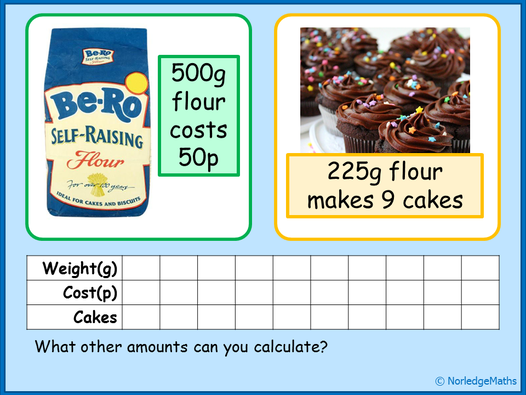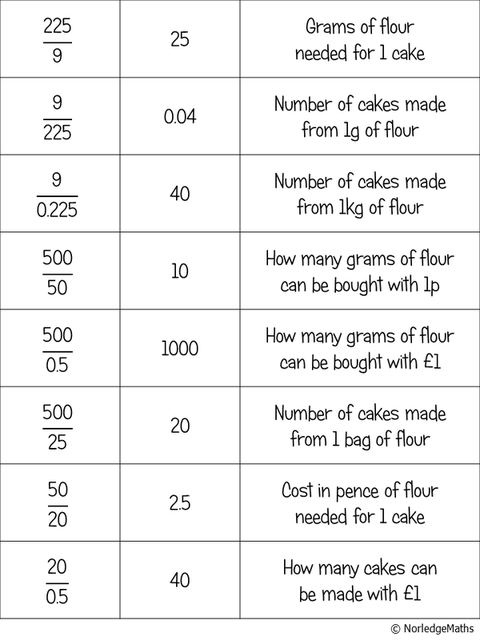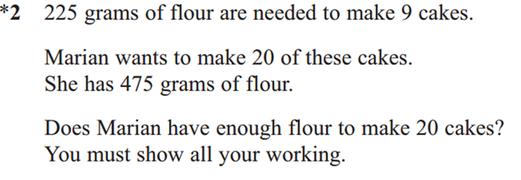By the time I got to proportional reasoning in our scheme of work this year, my classes had already had quite a lot of experience in using the bar model for solving fraction problems. I started off by working through one of the superb lessons I had from the NCETM last year, which looks at proportional reasoning using a bar.
We spent a lot more time messing around with other proportion problems using ratio tables. I wasn't trying to get them to find an answer at this point; the goal was more to work with the numbers and get a feel for correctly sized and useful amounts. Many of them decided that dividing by 10 was a useful thing to do, which bodes well for further work on percentages.
Once we'd done a few where I just let them work out whatever they wanted, we discussed the most useful building blocks to find. We agreed that finding "one" of something was really useful, as you could quickly get any number from there.
I got them to work with a ratio table with three columns, and just asked them to fill in any amounts they could find. By this stage, they were fairly confident with finding "one" of something, then using this to work out other amounts.
We had quite a powerful discussion about what "finding one of something" really meant in this context and emphasised exactly which way round the division needed to happen to find out whatever they needed. We talked quite a lot about "cost per cake" being a clue as to which way round to divide the numbers.
Interestingly, some of them approached the problem by working out how many cakes she could make with 475g of flour, while some worked out how much flour she would need for 20 cakes.







 RSS Feed
RSS Feed
